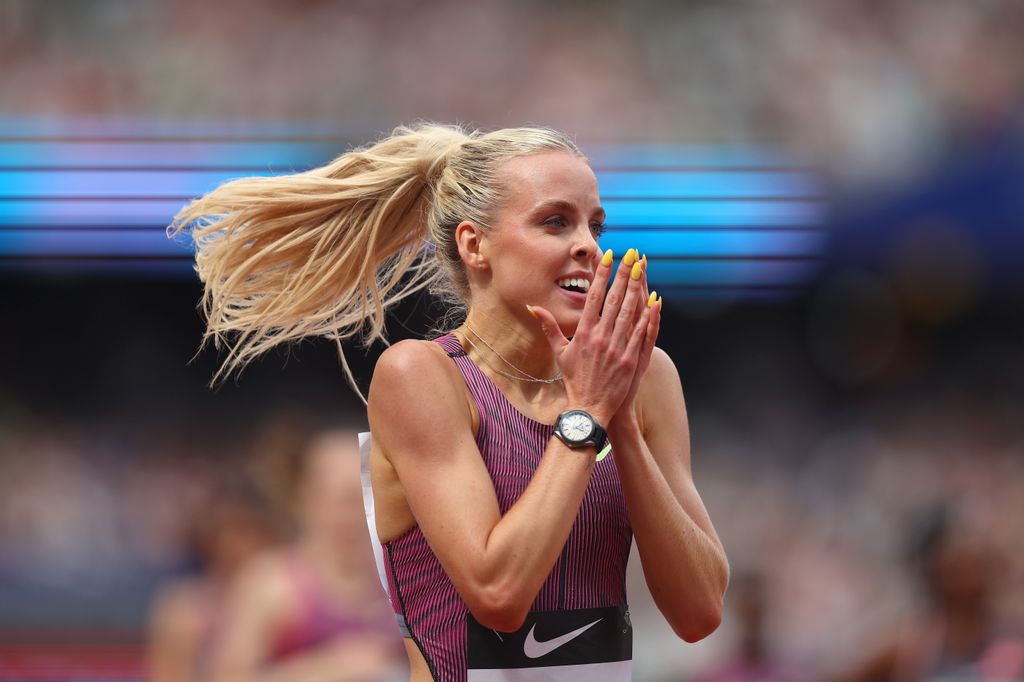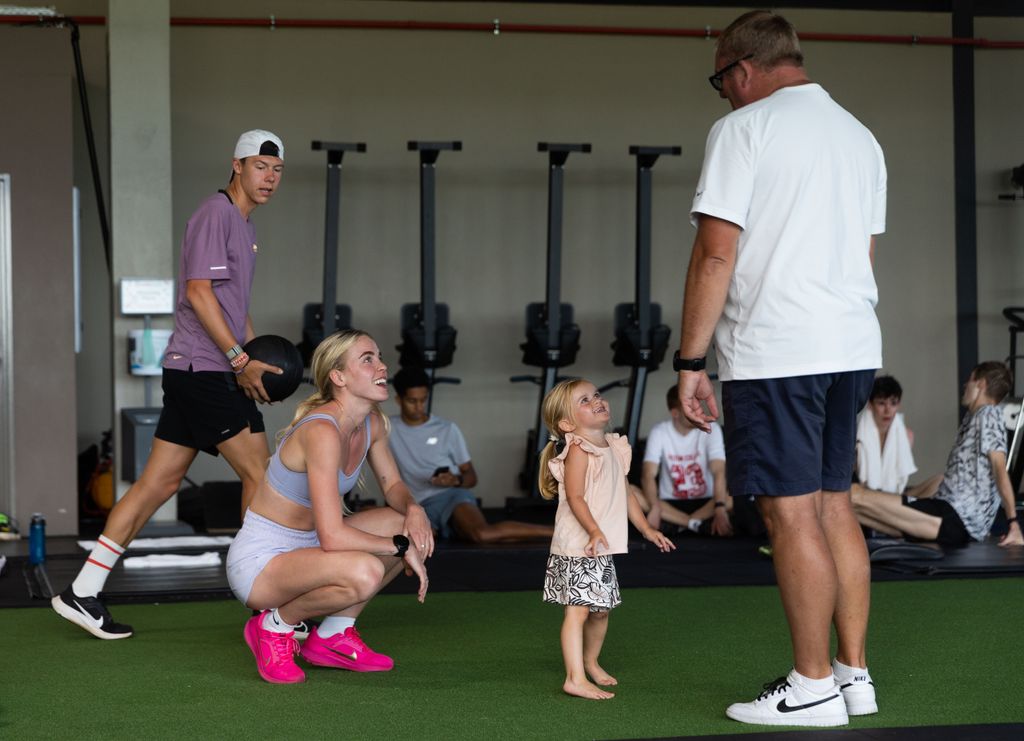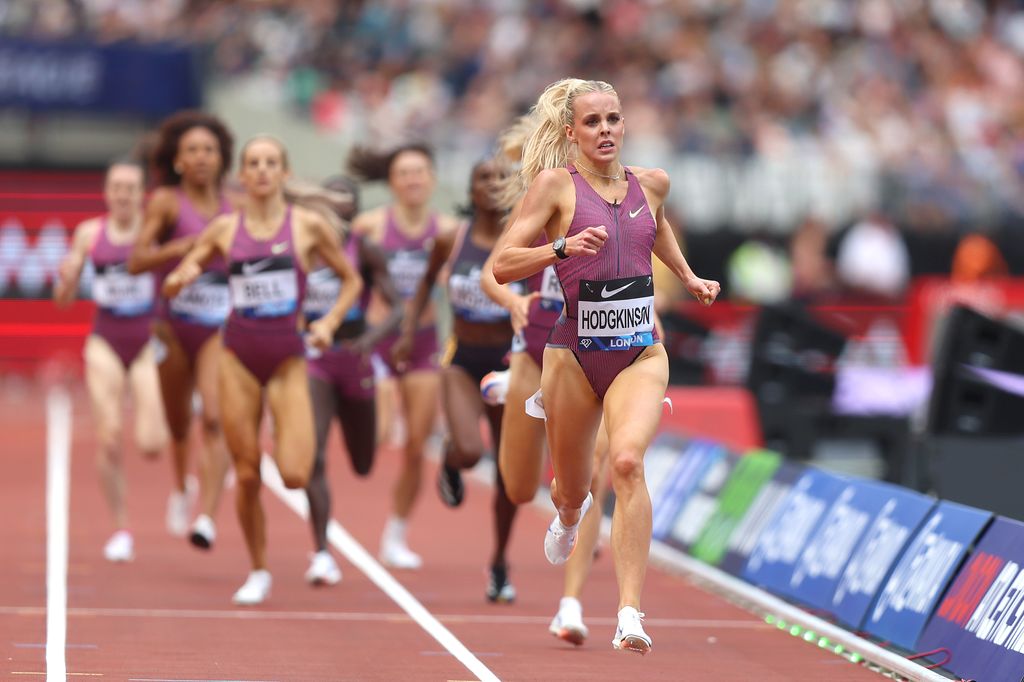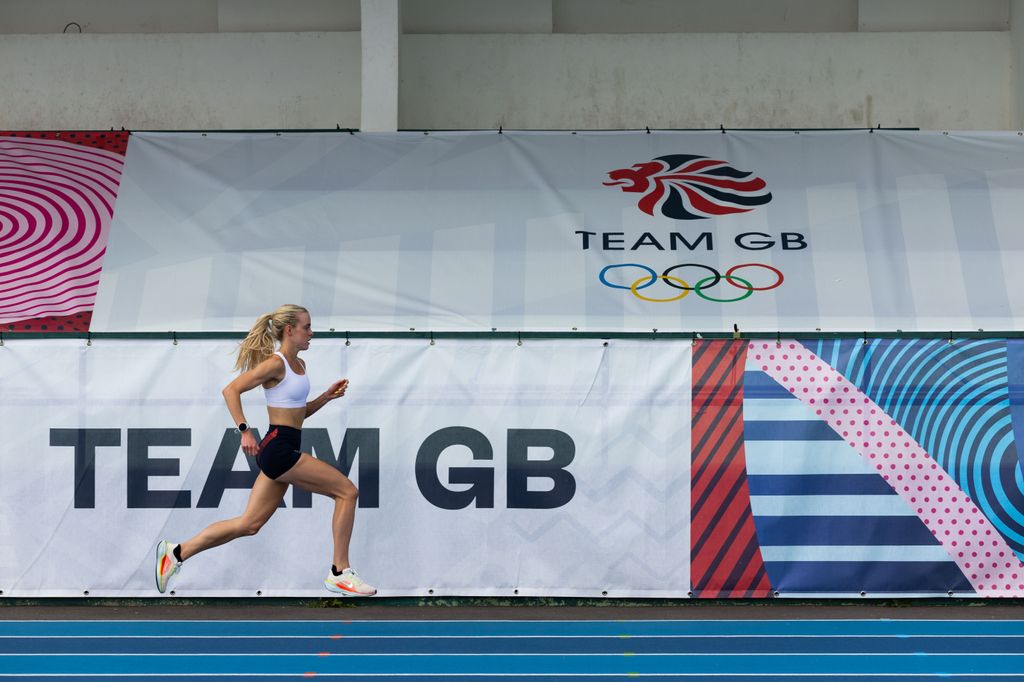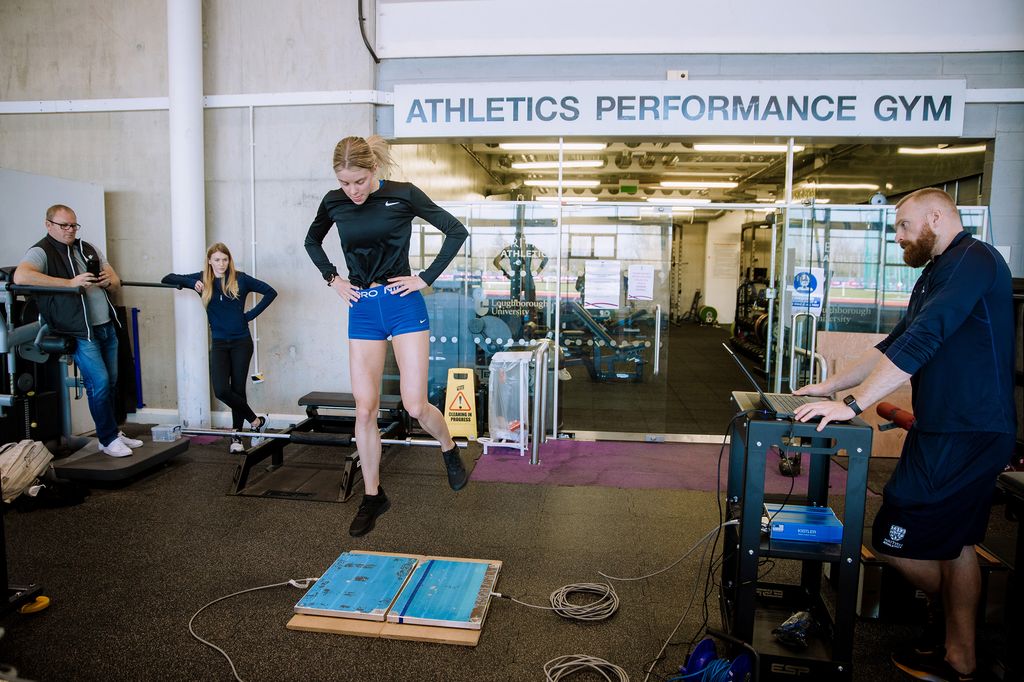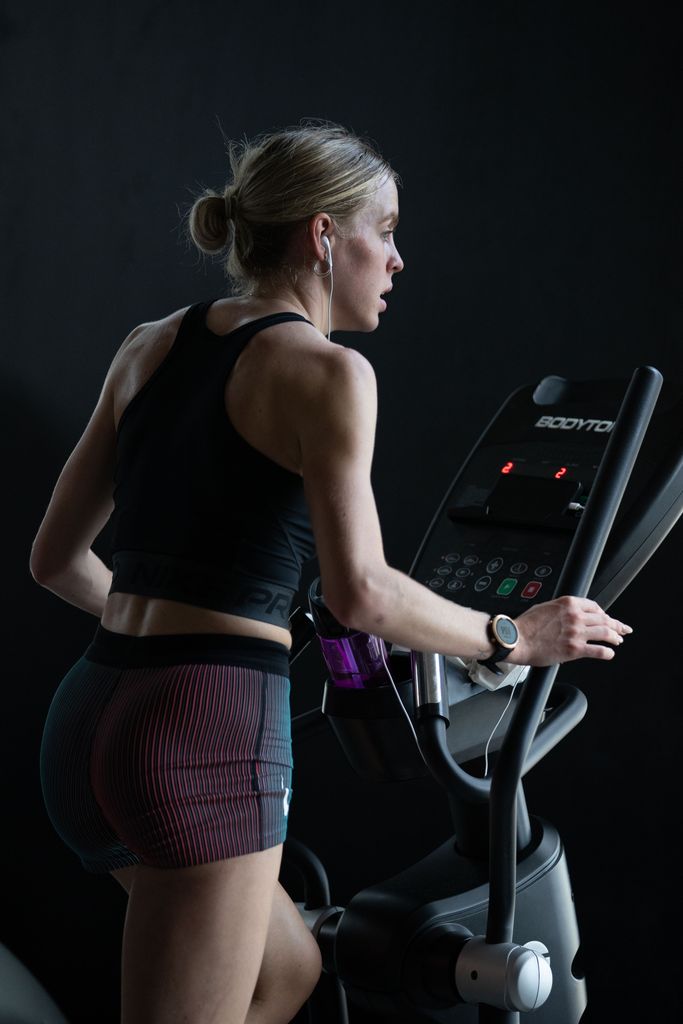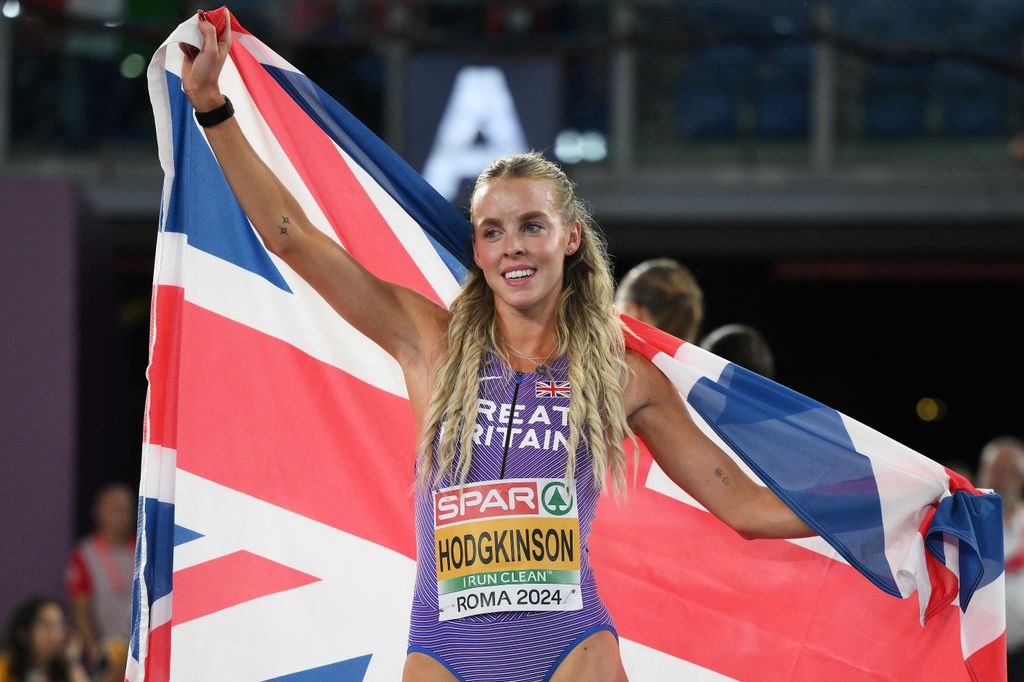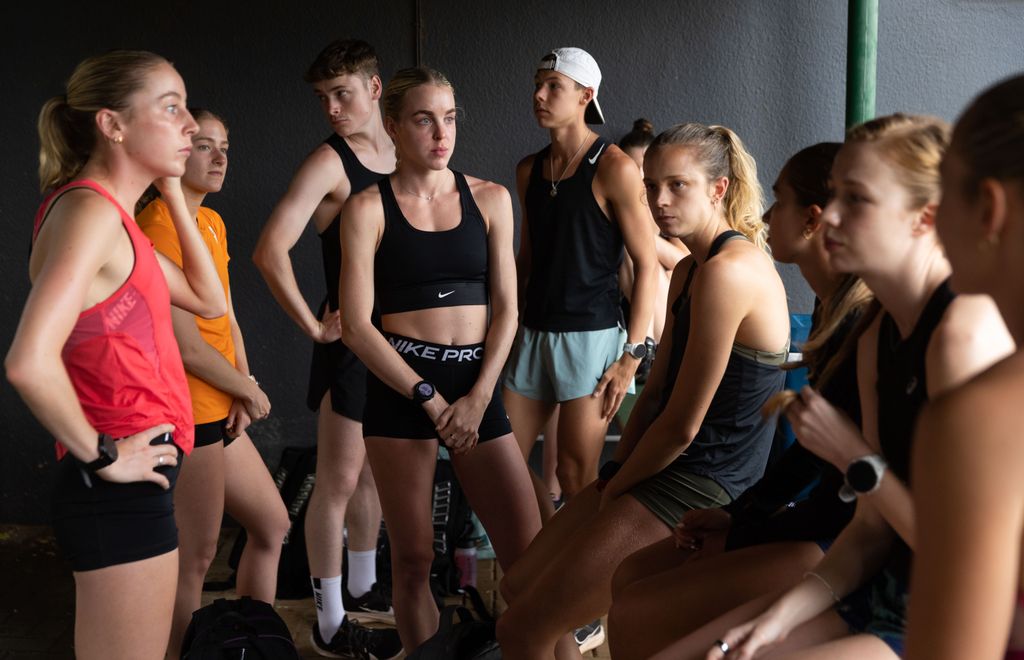Reaching the standard of representing Team GB in the 2024 Paris Olympics doesn't happen overnight. In fact, professional middle-distance runner Keely Hodgkinson, 22, has ploughed hours into preparing for the must-see race on 5 August.
But devising a plan to be fit and ready for such a race is a fine art and her rigorous regime is certainly not for the faint of heart. HELLO! got the full lowdown from PT and founder of Ladies Who Crunch, Nancy Best, and it has us working up a sweat at the very thought!
Keely's regime: The full breakdown
In an interview with Runner's World, the athlete shared her weekly workout routine in full.
The runner also revealed that, as an 800m runner, she trains more like a sprinter - focusing on speed over mileage.
Keely's varied training schedule
Nancy reveals that Keely’s programme has a powerful combination of variety and consistency. "She’s testing her body with a mixture of training formats, from strength training in the gym to cardio on the cross trainer," the PT explains. "However, it’s not just a random selection - there is a clear strategy that she executes week after week, month after month, to elicit results."
It is not a coincidence that her coach tweaks her programme based on the seasons. "Our bodies are sensitive to our surroundings and everything from the temperature to the pollen count can affect our exercise performance," says Nancy.
How does her programme set her up for 800m runs?
The question is, how does a carefully curated programme of this nature maintain Keely's stamina over 800m? "Her dedication to working on both fast and slow twitch muscle fibres makes her a formidable athlete," Nancy says.
"Slow twitch muscle fibres are responsible for endurance movements, helping your body become more resistant to fatigue (her sessions on the cross trainer will be helpful). Meanwhile, her short track sprints improve her fast twitch muscle fibres - so she can complete dynamic, powerful movements instantly."
Why does Keely cut out long-distance runs?
The sports star revealed that she rarely builds long-distance runs into her weekly schedule. Fret not - this is not putting her at a disadvantage during the Olympics.
"Although she needs to build her aerobic capacity, there is no reason why she can’t do this with other forms of steady-state movement (like going on the cross trainer, or hiking, or swimming), instead of long-distance running," Keely reassures us.
"Her success in the 800m relies on speed and force, rather than endurance, which is far more important for marathon runners."
Nancy highlights that Keely is still covering a lot of distance on foot, it’s just cumulative across the week, instead of from a standalone long run. "She needs to be careful to avoid injury or triggering a repetitive strain, so it makes sense that she’s not adding longer distances into her programme," she says.
Being careful to not overwork it
Those not undertaking an Olympic-level fitness programme may assume that a six-day-a-week workout programme would put the body under strain. However, Nancy tells us that over-exercising is actually more related to intensity, than volume.
The fitness expert explains: "Based on her description of her programme, there’s a tapered approach and I’m sure she’ll have a rigorous recovery programme alongside her training, from ice baths, to massage guns.
"I wouldn’t recommend following this programme without proper guidance from a qualified coach, particularly if you have a predominantly sedentary lifestyle. There are tonnes to take inspiration from, but for the general population, I’d suggest reducing running to no more than three days a week."
All-important rest
Keely is wise to have a rest day as incessant exercise can leave you prone to injury. "Rest for athletes is a fine art - from tracking her sleep to monitoring her resting heart rate, Keely's coaching team will have a robust process in place to optimise her recovery," Nancy tells us. "We know that muscle repairs and develops on rest days, so her Friday ‘off’ is key."
A sufficient warm-up and cool-down are also key to preventing injury. Nancy recommends focusing on mobilising your ankles, hips, thoracic spine, chest, calves and glutes both before and after a run.
Keely's race day breakfast
Keely has revealed that she sets herself up for a race with porridge, white toast, and a cup of tea and Nancy approves. "Carbohydrates before a run are really important to top up your glycogen stores," she explains. "There is some research that caffeine can aid performance before a run, too."
DISCOVER: Team GB's rarely-seen children supporting from the sidelines: Tom Daley, Adam Peaty and more
Meanwhile, "post-run she’ll need to prioritise eating a lean protein source, to repair and rebuild muscle mass. Having food rich in magnesium (like spinach or avocado) is also really helpful for recovery, as there is research that suggests magnesium is a relaxant and can aid sleep."


